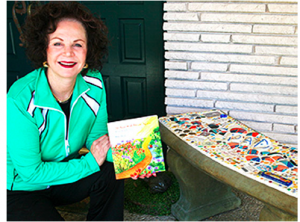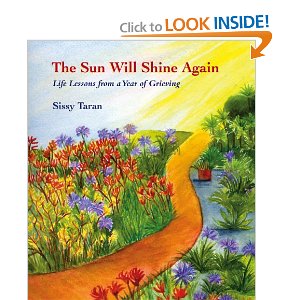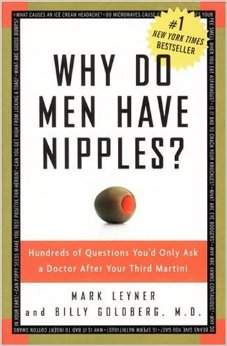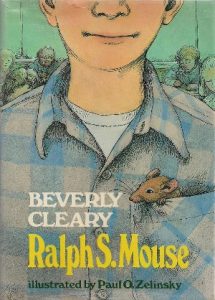
Author Sissy Taran, courtesy Noozhawk
A combination of laughter and tears helped Sissy Taran survive the sudden death of her husband Bernie, in June 2005. “There aren’t any magical answers to survive the loss of a loved one,” says Sissy, but she hopes to help others by bringing that same bittersweet combination of humor and compassion to her new book.
Leslie Dinaberg: Tell me about The Sun Will Shine Again: Life Lessons from a Year of Grieving? How did you come to write the book?
Sissy Taran: People kept asking me how I was doing, and I had no answer. Usually I’m not shy and I’m not at a loss for words … Finally I came up with, “Well I’ll just write a book.” (laughs) That was my response to “how are you doing” because I didn’t know how to say it any other way.
So (five months after her husband’s death) I’m at the temple…and I see the Rabbi’s door open and I decide I’m going in and I’m going to ask the Rabbi to write a forward for this book that I’m going to write.
Now I have no idea how to write a book. I don’t have the foggiest idea how to write a book. But the door was open, so I went in and I spent an hour with him and when I was through, I said, “Gee, do you want to co-author this book with me?” … Then I went home and I called my neighbor (Laurie Deans Medjuck) to ask her how to write a book. … She ended up being the editor.
…The Rabbi started to interview me, he interviewed me for seven months, an hour and a half, every week, and I spoke, we spoke, 500 pages, 100,000 words. … The whole book came from the transcripts.
LD: Did you feel like in reflecting on what you had said originally that your feelings about some things had changed?
ST: What happened was I didn’t feel like the same person anymore. When we started writing it and making it into the book, it was this person I watched grow. This person I watched from the very beginning of her baby steps. It was almost like taking myself and putting myself over here and being totally removed and watching the growth and how she became empowered and looking at it now, two years later, I still look at her as another human being. It’s fascinating.
LD: How much of how you feel now do you think has to do with the act of writing the book, as opposed to going through the whole grief process?
ST: Well, interesting enough, I didn’t think of the book as being cathartic. It was only after I did it, it was like visiting a therapist, but I didn’t know that.
… We were doing something for somebody else. It wasn’t for me. I was writing this because there was nothing available I felt that people could relate to. So I had a project and I like projects.
LD: One of the things that really struck me was how you always think about someone grieving the big things like holidays, but not how many little day-to-day reminders there are.
ST: I think probably the turning point for me was putting in the new driveway. … when we make a decision we bounce it off of people. … But in the driveway I didn’t do that. In the driveway I shook hands with the person that put in the driveway. I didn’t have a contract, I didn’t bounce it off of anybody and I said, this was it. Now I didn’t know at the time that that was going to be as monumental in my life … when I drive up to the driveway every single day … and I drive up to those rocks. Those are MY rocks. I did that.
… we walk it all differently, but it’s our individual walk. So this, somehow, and I don’t know why, this book was burning within me. Somehow. Because I’ve never written and if I had to sit down at a computer I still wouldn’t have written a book.
LD: But it’s interesting how you came up with a way that worked for you and you were able to do it and it felt comfortable and it reads like you too. And I think there are a lot of levels to relate to it.
ST: The interesting part was that I thought that it would be much more about Bernie and it ended up not being. It started out where the rabbi and I were co-authors. It didn’t turn out that way, because he’d ask a question and I’d spend an hour talking. And then it turned out that it became a legacy to my mother.
So it changed its direction. Bernie was the vehicle for me to experience all of this, but the lessons that I learned as a child and the things and the sayings that she taught me, that was really the bread and butter of it. … Throughout this book you will find quotations from my mother, Buddie Shrier. Some of these I found after she died, written on lists or pieces of paper and collected in a small wooden box. Others were simply things I heard her saying on an everyday basis. The life lessons they express form the foundation of my life and had an enormous influence on how I coped as I mourned the loss of my husband. … So for me, this is really a tribute to her. So as it started it out, where it was co-authored with the rabbi. Didn’t happen. Where it was about Bernie, didn’t happen. It’s my journey.
LD: It’s interesting too that you say that because that’s something that has struck me about people that I’ve known that have lost a spouse. One of my friends lost her husband when she was pretty young and she’s gone to accomplish things professionally that she would never have done if she were married, because she wouldn’t have had to. It’s definitely an example of one of those one door closes another one opens kind of thing. …
ST: That’s right. And it’s a choice, Leslie. It’s really, really a definite choice and you can watch those who do it and you can watch those who don’t do it and I think we’re born genetically with our certain DNA that we’re positive or we’re negative and then you have a choice after that. And my choice and was to do this, to make a difference.
… I’m just along for the ride and wherever it goes, it goes.
LD: Well it’s a great accomplishment to have written a book and have it sitting in front of us here, even if it never goes anywhere else. The fact that you wrote it and you got everything you got out of writing it. And the product itself is a whole other journey.
ST: I did it and I love it. You know it’s interesting, I look at it, and just like they can’t ever take your education away from you, I am always going to be a published author.
Vital Stats: Sissy Taran
Born: Detroit, Michigan, November 26, 1944.
Family: Three grown daughters, Tiffany, Francine and Nadine; Son-in-laws Scott and Zach; and grandchildren Ethan and Blythe.
Civic Involvement: Mentor to two children in the Council on Alcoholism and Drug Abuse’s Fighting Back program; CALM; Anti-Defamation League; Coalition Against gun Violence; Hadassah; B’nai B’rith Temple.
Professional Accomplishments: Former elementary school teacher who has been honored with outstanding service awards from the Beverly Hills and Santa Barbara PTAs.
Little-Known Fact: “My dad was part of the Kennedy administration and I was raised on a ranch outside of Bakersfield.”
Benefit for Hospice of Santa Barbara and Congregation B’nai B’rith
On Sunday, February 10, from 2 to 4 p.m., Hospice of Santa Barbara’s Executive Director Gail Rink will interview Sissy Taran and Rabbi Steve Cohen about their experiences working on “The Sun Will Shine Again: Life Lessons from a Year of Grieving.” Then refreshments will be served and all book sales from that day will go directly to Hospice and the Temple.
Originally published in Noozhawk on February 3, 2008.
 ith Sunday afternoon at a special event honoring the publication of Sissy Taran’s new book, The Sun Will Shine Again: Life Lessons from a Year of Grieving, (www.thesunwillshineagain.com) with all proceeds going to support the two organizations.
ith Sunday afternoon at a special event honoring the publication of Sissy Taran’s new book, The Sun Will Shine Again: Life Lessons from a Year of Grieving, (www.thesunwillshineagain.com) with all proceeds going to support the two organizations.


 Preparing to embark on a week of holiday leisure, I inventoried my reading material and came across the book I’ve been waiting for my whole life. It’s called
Preparing to embark on a week of holiday leisure, I inventoried my reading material and came across the book I’ve been waiting for my whole life. It’s called  Why? Because it’s an awfully catchy title.
Why? Because it’s an awfully catchy title. Reading comprehension, retention is the name of this popular game
Reading comprehension, retention is the name of this popular game